The Cornell Lab Bird Academy › Discussion Groups › Joy of Birdwatching › Activities: Bird ID Practice
-
Owls are recognizable by their rounded heads that appear to grow out of their bodies or shoulders, with no neck in between. The Barred Owl, which has a very distinctive call, is large and recognizable. I was fortunate enough to go for a walk early in the morning when it was still dark. I saw an owl shape on top of a substantial wooden sign in front of a neighbor’s house. I realized it was not a piece of wood shaped like an owl as I passed it because it was very round and three-dimensional. I was perhaps 6 feet away from it and my presence obviously bothered it, as it started to stand on first one foot, then the other. It had dark eyes set into a light-colored face; I saw no ears. I observed it for a few minutes, then continued on my walk. When I returned to the area, the owl was gone. I had been hearing the distinctive call of the species for a number of mornings prior to first light. I live in a town in Central Illinois, near a very large park that contains deciduous woods and a couple of ponds. The Northern Cardinal has a distinctive crest that both males and females exhibit, a long tail, and tend to be the first ones to my feeders in the twilight of morning and the females are the last to leave late into dusk. I know them by their sounds before I see them, as they have distinctive calls. There are two males who have visited my yard for the last several years. They have unusual grey markings on their heads, necks, and backs. I think they must be from the same parents, or even a father son; the black at the throat is more of a very dark grey and the other markings are random, like there was a slight genetic glitch. Otherwise, they seem to be like other cardinals.
-
Well it's pretty slim-pickin's here in northern MI at this time of year. But my feeders are alive with our winter residents. The usual suspects: Black-capped chickadee, white and red-breasted nuthatch, blue jay, mourning dove, tufted titmouse, and downy, hairy and red-bellied woodpeckers and the occasional dark-eyed junco-for now. (I should have done this lesson in the spring/summer) Activity 1: SIZE Blue jay=robin-sized, one of the few birds at this time of year that has "color". BCC=sparrow-sized, and using several calls to announce that "their human" just filled the feeders or baited the front porch railing. Activity 2: COLOR WB Nuthatch, BCC and Tufted Titmouse. All of them may not be easily identifiable by a beginning birder but the caps and size of the three, as well as the crest of the titmouse helps to tell them apart. Activity 3: FOOD FINDING The best part of birding in my opinion. Bird behavior. The BCC and Titmouse grab a seed from the feeder and take off to consume it. I've timed the chickadees and it takes them about 15-20 seconds to eat the meat out of the seed. The Titmice fly into heavy cover so I have not seen them eat. The blue jay on the other hand, "swallows" 5-6 seeds and flies off to eat them. I'm curious to know how many they can actually stuff in their gullet. They usually get spooked before they can grab more than 5. Activity 4: FAVORITE BIRD DESCRIPTION It has to be the black-capped chickadee, all year 'round. Besides eating out of my hand, they are fun to watch. There is a pecking order in "my" winter flock. A few may share a feeder before grabbing a seed and then one of the more dominant ones flies in and scares the others away. They also will judge the size if the seed with their beaks and if it isn't large enough for them, them find another until they find one worthy of eating. The nuthatches on the other hand, flick out the small seeds so they can facilitate their seed-finding process the next time they come to the feeder. Chickadees here in Gaylord, MI all look the same and there are no other species. The black cap and bib with the drab colored wings make them easy to ID. In the UP, boreal chickadees can be found but down here, it's just the BCCs. When foraging for insects, they will check every nook and cranny for over-wintering spiders and insects. That's great to watch. Since they are in their winter feeding flocks, they don't sing the "cheeeeeese burger, cheeeese burger" song, but all of those other calls to announce food is here or show their curiosity or displeasure make winter enjoyable.
-
My tufted titmouse visitors at my feeder actually eat the feed on the feeder, they hold it with their feet and then pick it apart :-) Super fun to watch! It's supposed to be "no waste" food so not sure what they are picking unless it's just too big for them.

-
@Misty Great Photo!
-
-
1. Two birds I can confidently tell apart by shape now are the Scrub Jay and the Stellars Jay, the latter of which has a plume and a not as big of a head as the Scrub, who's tale is also rather blunt. The color also gives them away:) 2. Three birds with the same colors in different patterns that I am getting used to are the Black-Capped chickadee, whose black head and chin are very thick, the White Breasted Nuthatch who has a black mohawk and white chin, and the Red-Breasted Nuthatch who has a white eyebrow between a larger black cap than the White-breasted, and all 3 sometimes have buff brown in their underbellies. 3. Juncos feed on the ground, as well as Mourning Doves, especially near feeders, and Nuthatches tend to feed upside down, and at feeders finches tend to feed upright and are really messy. 4. My favorite bird right now would have to be the Oregon Junco, as it was my first real ID and they are back now in my neighborhood, they have a beautiful dark head with a black eye, a pinkish bill, a chestnut colored back, and a buff belly, they would come to my feeder and flick the food on the ground then hop down to eat it, when I finally looked down I noticed many Juncos hopping around on the ground eating, hopping to and from small branches in the bushes outside, and now when I go to birding areas I see them fly up from the ground as I get closer. They make kind of a chip noise that is very regular and long rapid trills that I am starting to recognize by ear now.
-
I identify these birds using a field guide and Merlin, they have similar colors: black, rufous (reddish brown), gray, white, brown. But they have different color patterns.


 Rufous Naped Wren (front of my house), Rufous Collared Sparrow (my backyard) and House Sparrow (3 km from my home).
Rufous Naped Wren (front of my house), Rufous Collared Sparrow (my backyard) and House Sparrow (3 km from my home). -
I can tell apart just by shape the White Winged Dove (my backyard) and the Lesson´s Motmot (my neighborhood)


-
MY FAVORITE BIRD - I saw a painted bunting at one of my feeders in late April. It was the most beautiful bird I have ever seen and I simply could not believe it was just ... there! The colors were so vivid. Sadly, the bird was at the feeder for such a short time and I did not see it again during the summer. A smallish bird, about 7 inches with a vivid blue head, green back and rosy breast. I have also seen numerous indigo buntings in the woods ... flitting among the tree branches and into/out of the bushes. They are not nearly as colorful as the painted buntings, but a treat to see nevertheless. Another favorite are the Great Horned Owls I have seen perched on branches while walking in the woods from winter through early spring. I first noticed one of the owls in a sycamore, and could not believe my eyes. It was just a "shape," somewhat concealed among the remaining leaves and I just happened to notice the "horns," and then the rounded shoulders as it sat on the branch. I wondered how many times I had passed near the same tree and only glanced, or perhaps just didn't look at all until one day I realized what I was seeing. During much of the winter I would see the/an owl in the same tree, in just about the same spot ... the last time I saw the owls, there were two perched in another tree near that sycamore. One "appeared," to be larger and in my mind it was an adult and a juvenile ... perhaps preparing for the juvenile to go off on its own!
-
Downy Woodpecker - No visible red, small and "fuzzy" looking. Hairy Woodpecker - larger and "smoother" than Downey. Has a small red patch on back/top of head. Red-headed Woodpecker - Brilliant red head, larger than Downey/about the same size as Hairy.Has distinct black and white pattern on the body.
-
Two birds that can be told apart by shape are Killdeer and this bird (photo attached).
 I think it is either a Short-Billed or Long-Billed Dowitcher. These two birds are both shore birds and thus inhabit the same habitat, but they are very different sizes and different shapes, mainly in the bill.
The colour that I chose was rusty red-orange. Three birds that have this are the American Robin, Chestnut-backed chickadee and varied thrush.
Two birds on the search for food are the Belted Kingfisher, which swoops from a height to grab fish, and the Great Blue Heron, which stands still in the shallow water or shore and jabs it's head into the water to grab fish. These are two very different methods of functionally doing the same thing - catching a fish. Another was little shorebirds (I think Killdeer or a similar species), just pecking in the mud, presumably to find small creatures to eat.
While naming a single favorite bird is hard, I would have to say that the Western Tanager. The male's jet-black wing with a clear white wing bar along with the bright red forehead is very distinctive. The female's colouration looks like more drab, greenish-yellow version of the male's. The general size is robin-sized and the shape is close to that of a robin. According to Merlin, it breeds mainly in high elevation coniferous forests, and can often be found high in the tops of trees. Also according to Merlin, it's range stretches mostly from the west coast of North America to roughly near the center. It's breeding range stretches a little bit into Nunavut, and all the way down to around the US - Mexico border, and it's winter range is mainly Central America.
I think it is either a Short-Billed or Long-Billed Dowitcher. These two birds are both shore birds and thus inhabit the same habitat, but they are very different sizes and different shapes, mainly in the bill.
The colour that I chose was rusty red-orange. Three birds that have this are the American Robin, Chestnut-backed chickadee and varied thrush.
Two birds on the search for food are the Belted Kingfisher, which swoops from a height to grab fish, and the Great Blue Heron, which stands still in the shallow water or shore and jabs it's head into the water to grab fish. These are two very different methods of functionally doing the same thing - catching a fish. Another was little shorebirds (I think Killdeer or a similar species), just pecking in the mud, presumably to find small creatures to eat.
While naming a single favorite bird is hard, I would have to say that the Western Tanager. The male's jet-black wing with a clear white wing bar along with the bright red forehead is very distinctive. The female's colouration looks like more drab, greenish-yellow version of the male's. The general size is robin-sized and the shape is close to that of a robin. According to Merlin, it breeds mainly in high elevation coniferous forests, and can often be found high in the tops of trees. Also according to Merlin, it's range stretches mostly from the west coast of North America to roughly near the center. It's breeding range stretches a little bit into Nunavut, and all the way down to around the US - Mexico border, and it's winter range is mainly Central America. -
Killdeer are interesting birds. I worked as an archaeologist in the Midwestern US for many years. Surveying farmer's fields early in spring before they plowed and disced the ground, we would find what I'd been told were Killdeer nests on the ground with hungry chicks chirping, open beaks pointing upward. The adults would make their characteristic calls away from the nests, pretending to have a broken wing, or some other problem, to lure us away from the nest. The babies must not have been able to see because they would only react to me if I moved my shadow over them. All of a sudden their little beaks would turn up and the mouths would open, waiting for a tasty morsel from mom or dad.
-
-
Activity 1: I was watching birds hanging out in bushes and trees in a park nearby, and was able to identify some of them just by shape. For example, downy woodpecker (relatively small, very distinct silhouette, black and white colours) and American robin (bigger than sparrows and chickadees, relatively long neck). Activity 2: I once noticed a bird outside my window having some red or pink colour on its head/neck/chest. I considered several options trying to identify it, all based on the colour I saw. My options were house finch, purple finch and fox sparrow. All these birds have some red/pink colour on their head and chest. Eventually, I identified my bird as a house finch, because, just as the bird I was watching, it has red around its face and breast, but not all over its head (comparing to purple finch). Activity 3: First bird: I was watching a Great Blue Heron - it was standing still in water waiting for fish to pop up. Second bird: I watched several Anna’s hummingbird - flying around trees and flowers looking for nectar. Third bird: American Robin - is always jumping on the ground looking for warms and insects. Activity 4: Steller’s Jay: size - between robin and crow; shape - prominent crest on the head, long tail, rounded wings, massive bill; colour: black head, blue body, wings sparkling on the sun, white markings above the eyes; usually fly solo, very noisy, like sitting on house roofs, explore tree branches and canopy.
-
My favorite bird, the Northern Cardinal, is identified by its red plumage in the male or auburn plumage and red crown in the female. It is larger than a sparrow but smaller than a crow. The sound is a high, clear chirp. Its main behaviors are flying and perching on trees, and I have also seen a few in a birdbath.
-
One of my favorite birds is the Magnolia Warbler. I saw multiple this past weekend while birding in Central Park. I was able to identify the Magnolia based on a few key factors. I know this was a warbler because we are in Fall migration here in the city and it is common to see them right now. The magnolias were yellow on their belly and chest with black stripes as a necklace, they hada white wing patch and wingbars of black and white, and the males had a gray crown with a black mask.
-
Activity 3. I visited a wetlands area today and spotted a brown duck. Merlin indicated it might be a female Mallard or Gadwall. Then I saw it dive and stay submerged for a surprising long time, so I beleive it to be a female Redhead. I observed Lesser Goldfinch eating seeds on a plant, and Gambels Quail picking seeds off the ground.
-
Activity 4- I've chosen the Belted Kingfisher, a new favorite since meeting two of them near my home recently. The excitement is still fresh in my mind.. What attracted my attention first was their call- who goes there? The sound was loud, fast, and stuttery. Fortunately, I had my binoculars with me so I watched and waited until I saw two birds flying from tree to telephone wire to transmission tower and then back again, all up and down the stream bank. I could see they were between robin and crow in size and their bill was medium-long, fairly slender and pointed. I saw that their top feathers were gray-blue in color, their bellies were white and I noticed one of them had rusty brown patches under her wings (I found out later on that only the females have this brown patch). These two were truly enjoyable to watch! I'm hoping to meet them again sometime.
-
Activity 1: I want to get better at identifying birds in flight. Outside my house I see several Canada Geese flying overhead. I also saw a Great Blue Heron. I noticed the way the Canada Geese extend their necks in flight, while the Great Blue Heron pulls its neck back while in flight. I would think that would cause neck fatigue. Activity 2: The American Goldfinch, Lesser Goldfinch, and Yellow-rumped Warbler all have yellow parts on their plumage. I'm still not good at distinguishing the American from the Lesser Goldfinch. I was able to identify the Yellow-rumped Warbler more easily because of the more limited location of yellow on the bird's rump. Activity 3: I saw an American Avocet feeding in a shallow pond by probing the water with its long, thin bill. Watched a group of Mallards as they feed by going tails up in ponds. Also saw a Northern Flicker feeding in a tree by pecking the bark with its bill. Activity 4: My favorite bird, the Osprey, is dark brown above and white below. It nests near water and feeds primarily on fish by diving down feet first and plucking the fish with its talons.
-
On the web cam for Ithaca, NY, we saw one white breasted nuthatch, 3 cardinals, 1 mourning dove, around 8 blue jays and one downy woodpecker. Watching the hummingbird web cam in West Texas, we saw many ruby breasted hummingbirds and we think we saw a black chinned hummingbird. We were using Merlin Bird ID and previous experience to identify them.
-
1. I identified a house finch from shape and color. It was tricky because so many of the sparrows and house finches look alike. I'm wondering if molting makes a difference in identifying. 3. I noticed sparrows and chickadees coming to my birdfeeder. They would come for some seeds, fill up, and retreat to a nearby tree. Then, they would repeat. 4. I love Carolina Chickadees. They are smaller than sparrows. They have a black crown/nape and black throat. The back is gray with a whitish belly. In PA, they seem to be at the top of their range and they go further south in the US East Coast. Their sound is a squeaky whistle.
-
Activity 1: I identified an American Goldfinch and an American Robin just by noting shape. The Goldfinch was much smaller than the Robin. The Goldfinch was also more prone to be perched on my feeders whereas the Robin stayed on the ground in search of food. Activity 2: An American Crow, a Red-Winged Black Bird, and a Common Grackle. I have the privilege of working as a wildlife rehabilitator and we have all three of these species in rehab currently! The American Crow is obviously much larger than the other two species. Red-winged Black Birds and Common Grackles are a little difficult from afar but once one sees the red wing--it is easy! Activity 3: An American Robin as described above searching the ground for worms; several Mourning Doves also on the ground eating bird seed right underneath the feeders; and an Eastern Phoebe going after bugs in mid-air. Activity 4: One of my favorite birds is the Carolina Wren because it is very vocal, bright, and alert. It is a smaller bird not much larger than the finch-size and is round--almost kind of plump. It was singing it's classic "tee-kettle--tee--kettle" song while hopping around the entrance of the garage. It had the white patch under the beak and the very noticeable white streak over its eye.
-
how do i join the discussion? did I do it? 1: ok. two birds of different shapes - I'm going to go v easy, because every day I see a Bald Eagle on the lake, and also a humming bird. Their shapes are so vastly different, at each end of the spectrum! The bald eagle is an apex predator, very large, and the wingspan casts a large shadow over the viewers! Mine perches in a tree across the lake, and is visible to the eye. On the other hand, my hummingbird flits so fast, and is so small, that I can't identify WHICH hummingbird it is, so i have to look at the regional guides! 2. For birds of the same color, i will go w cormorant and crow. both black, both large, but cormorant much larger than the crow, at least by half. and cormorant spreads its wings on a log on the lake... where as crow tends to habitat in the trees. I'll skip three. 4. I love the newly discovered Green Heron. No green on its body! yet its size is between a crow and a kestral. it has green legs. and it lives in the marsh, perching on fallen logs and bare branches of pine. It usually wanders alone, even the children!
-
My 6 year-old son is really wanting to see a Green Heron. So far, only Great Blues...
-
-
Activity 1 - A White Breasted Nuthatch is a bird with a distinct shape. It has a torso that is parallel to the tree surface, when it is climbing down a tree. And its' beak and head face straight up, in correlation to its' torso. A Northern Cardinal has a 'permacrest,' I would call it. Unlike a titmouse, its' 'permacrest,' is solid, and does not change in relation to its' animal instincts. I guess ? Unlike a Titmouse, or the Hooded Merganser. You would never confuse them, but the Cardinal seems, to me, to have a crest/point, that does not change. Activity 2 - 3 Birds with similar, yer different color schemes, are the : ROBIN, the TOWHEE, and the EASTERN BLUEBIRD. They have a color that envelops the upper body, and another color that encompasses the breast. The Towhee has a darker black on the back area, the Robin has a greyer back. And the Bluebird has a reddish/orange breast, and a blue upper back/body. Activity 3 - Junco, Sparrow, and Finches. Seem, to me, to ground forage together, and in similar fashion. I would also say, I may have seen a chickadee join in, but also, chickadees' do their own thing too. Not sure, but in my yard, the chickadee's join the ground foraging, and do more tree foraging too.? Some Finch types do their own thing, and some seem to join the Junco, Sparrow combination. Activity 4 - A Cormorant . I have seen them on the rocks of the water. They have a dark body, and an orange beak. They seem to be the best multi-talented bird. Diving, and swimming, and flying. And size and strength. They have the same attributes as diving waterfowl, but more strength and general animal talent. I saw one last week, and it was not just some duck. I thought it was as diverse as a diving waterfowl, but had the power of an eagle/pelican. Great display on the rocks of the reservoir. Display, drying body, sunbathing, combination.????? Cormorants' all seem to do this. I have seen 2 types. A Great Cormorant, and a ?flightess? one. It had smallish wings. Not sure. One was at a reservoir, One at the ocean beach.
-
Activity #4 - The Cardinal is my favorite bird. The bright red color of the male certainly makes it stand out, although I enjoy the brownish color of the female cardinal too. The black markings on the eye and throat area are a nice compliment to the overall coloring of the bird. I enjoy the happy short chirps and the pretty trills of the cardinals. And I always think of it as a rather quick moving bird that does not seem to stay in one place very long.
-
Activity #1: I was at the coast this past weekend and saw cormorants and pelicans. Besides pelicans being so much larger and lighter colored, they are so much more graceful in flight with slower wing movements and frequent gliding. The cormorants necks are long, they are dark in color and beat their wings so quickly in flight. Very easy to tell the difference.
-
What I thought was a Wren that comes to visit me every day and sometimes shows me his wife- I now think is a Northern Mockingbird. The Merlin app doesn’t show wrens in my area. “My bird” that likes to meet me in the backyard, will have it’s tail sticking up in the air when on watchful alert. I have even seen him (I used to think her) dive bomb on a squirrel scurrying on an electrical wire. This bird and his wife bring me joy. The ring necked doves have been absent for months - just when I thought of building them a nest.
-
Activity 1 - Look for two birds (either outside or on Bird Cams) that you can tell apart just by shape. I decided that I wanted to use Merlin to ID a Barred Owl and a Greater Yellowlegs. As I have made more and more journeys into the field this year (my first year birding), these are two birds that I can easily ID accurately just because of their body shapes. Merlin was easy to use too ! I went through the menu and answered the questions and the next thing I knew, Merlin offered several choices based upon my answers and sure enough the Barred Owl was there ! I took a few moments to read the description and then I played it's songs and studied its usual ranges. Then I started at the beginning again and entered the data that best describes the Greater Yellowlegs. After answering each question, Merlin provided me with a few choices and the Greater Yellowlegs was one of them. Pretty cool. I often am up early and head to the shore this time of year and although I try to position myself where the wind and the sun are at my back, it is fun to note that even in silouette - the Greater Yellowlegs is a bird I can positively ID now every time based on its shape. It's foraging style of rapid leg movements while it sweeps its bill through the water is distinctive too, and these two elements make them easier for me to ID correctly ! I took a few moments to read the description and then I played it's songs and studied its usual ranges. Merlin is a pretty cool, and very accurate tool to assist me in ID'ing birds correctly ! Activity 2: Look for three different birds that have the same color (e.g., black, white, or red), but on different parts of their bodies. The Red-winged Blackbird; the Red-bellied Woodpecker and the Northern Cardinal each have red coloring on their bodies. Obviously, the Northern Cardinal (Male) is almost fully adorned in red ! But the Red-winged Blackbird only has red coloring on its shoulder patches ! The Red-bellied Woodpecker has red coloring on the crown of its head and it continues down on its nape ! Merlin was very helpful in accurately id'ing these 3 birds, providing me with photos of each, along with a description of each detailing where to find the red (as well as other) coloring on the body of the bird. Activity 3: Look for three different birds that are searching for food today. What are their food-finding behaviors ? I decided to focus on Shorebirds today for activity # 3 as now (Late August) the Shorebirds are migrating through New England along the shoreline and it is interesting to watch each of their foraging behaviors. The Snowy Egret is a graceful bird, and I found it today running in shallow water near mud flats chasing and then spearing smaller, minnow size fish. The Great Blue Heron in contrast positions itself on shoreline edges or in the water and doesn't move at all. It almost becomes a statue until an unsuspecting smaller fish comes by, and the Great Blue Heron will move swiftly be striking with its neck and bill to snare its food. The Greater Yellowlegs, moves around shallow and mid-deep water with erratic movements as it swings its bill back & forth side to side to catch fish and other food ! Activity 4: Pick your favorite bird, and see if you can describe it using at least three of the bird ID strategies (size and shape, color pattern and markings, behavior, habitat and range, and sounds). One of my favorite birds has become the Alder Flycatcher. While it is small and somewhat drab (olive green) colored bird, with black wings. It is larger than a sparrow but smaller in size than a robin. It has two distinctive, white wing bars on its black wings and it has a distinctive "rreeBEER' song. It also will make a "pip" call ! The Alder's we observed nested in bushes approximately 5 feet above the ground and immediately adjacent to a pool of water. This Spring and Summer, a close friend uncovered this pair of Alders and allowed me to observe them with him several times a week ! We watched them bring nesting materials, then we discovered their nest in the bushes, and we observed them feeding their newborn in the nest with food they would catch; and then finally we observed the newborns leaving the nest ! This was an exciting breeding season for me to watch, and that fact that Alder Flycatchers have not been confirmed breeding up here in Essex County, made this fun for me !
-
Activity 1: I went to the wall of birds and voted for the barn owl, the wood duck, the brown creeper, brown thrasher, and the great blue heron. Also Activity 1 was to id 2 bird by shape: I know a turkey vulture by its shape high in the sky and how it soars. I know a gold finch by it's small size. Activity 2 three birds of the same color would be the northern cardinal, summer tanager and scarlet tanager: the northern cardinal has a black mask and the rest of him is red, the scarlet tanager has black wings and the rest of him is red, the summer tanager is all red. Activity 3: A barn swallow flies through the air to catch insects, a house sparrow finds food (seeds and insects) near the ground, a downy woodpecker pecks a wooden post in my back yard for insects. Activity 4:One of my favorite birds is the cedar waxwing: size-bigger than a sparrow smaller than a robin;shape-rounded, short tail triangular wings; color pattern and markings brownish gray with a black mask, black beak, white under tail coverts and has a crest, yellow tipped tail; behavior-small flocks; habitat and range-nests in brushy areas like old fields and stream edges. winters in open woods or suburbs where berries are plentiful;and sounds a series of call notes. a high thin clear or slightly trilled sreeee given in chorus from flock.
-
Activity #1: Two birds I can tell apart by shape are the great blue herons vs. bald eagles. Activity #2: I chose to identify birds with the color white. While using binoculars at an estuary, I spotted a heron-like bird that was definitely not a great blue heron because it was all white. With the help of Merlin and my field guide, I discovered it was a great egret. I also identified a black capped chickadee and a ring billed gull. All 3 birds have white coloring. Activity #3: Birds at my sunflower chips feeder today include black-capped chickadee, American goldfinch, and dark-eyed junco. Wading, fishing birds included the herons and egrets, and an osprey was hovering before diving at the estuary.
Read More:
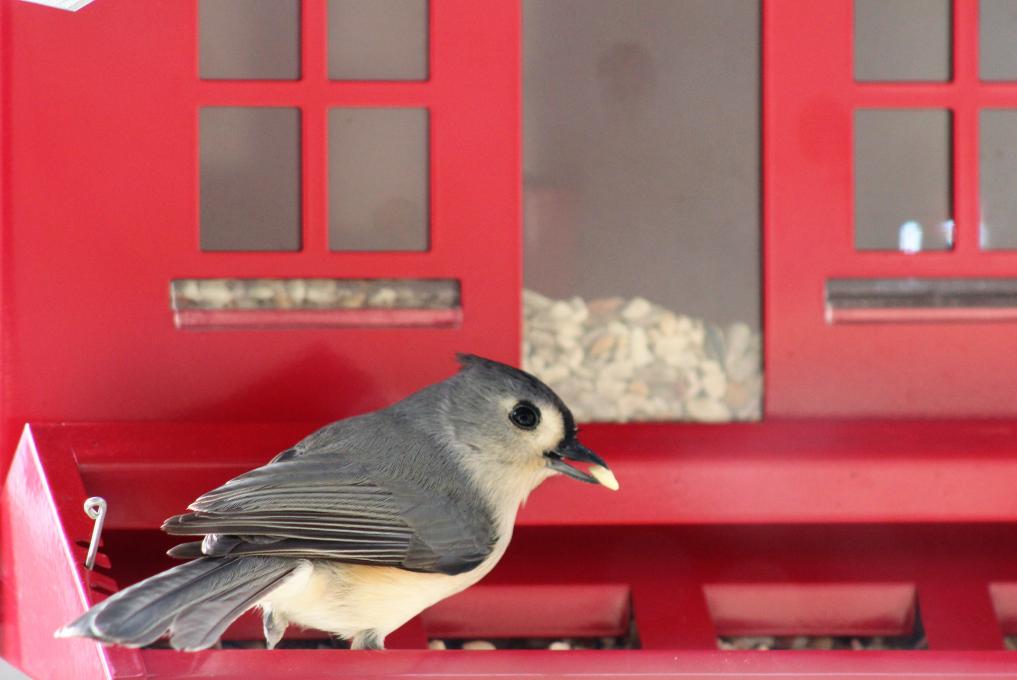
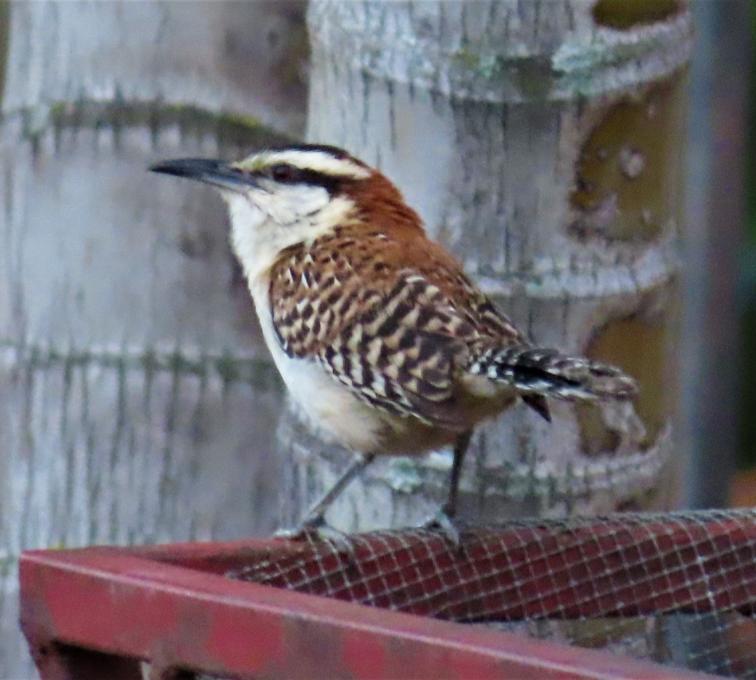
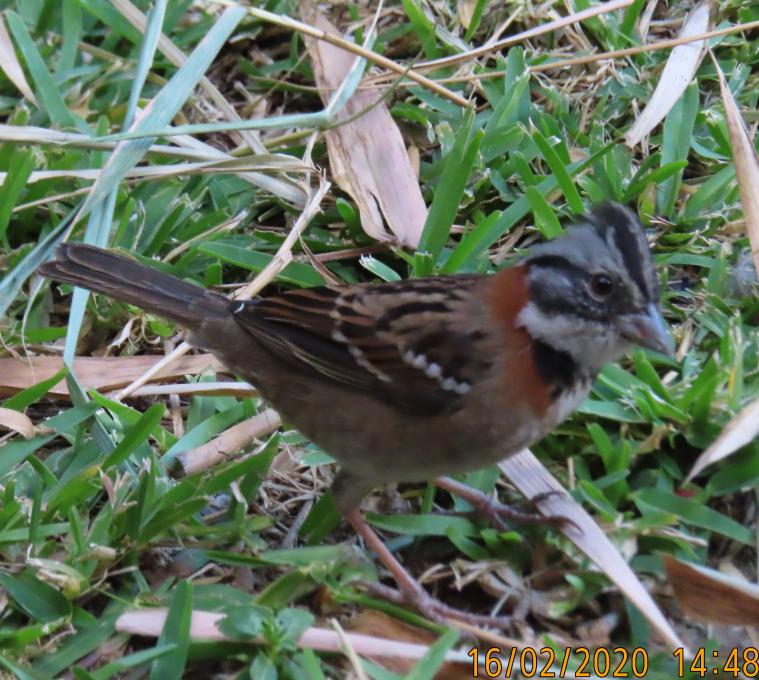
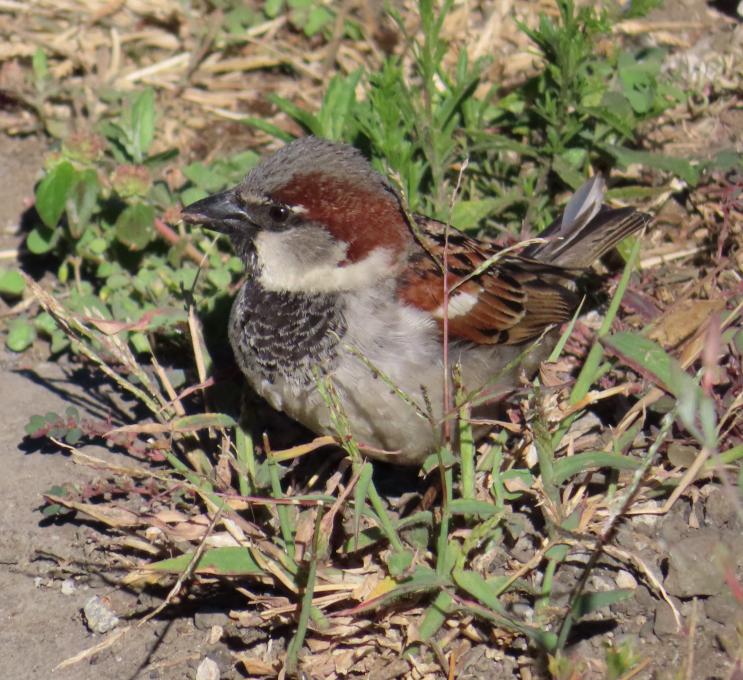 Rufous Naped Wren (front of my house), Rufous Collared Sparrow (my backyard) and House Sparrow (3 km from my home).
Rufous Naped Wren (front of my house), Rufous Collared Sparrow (my backyard) and House Sparrow (3 km from my home). 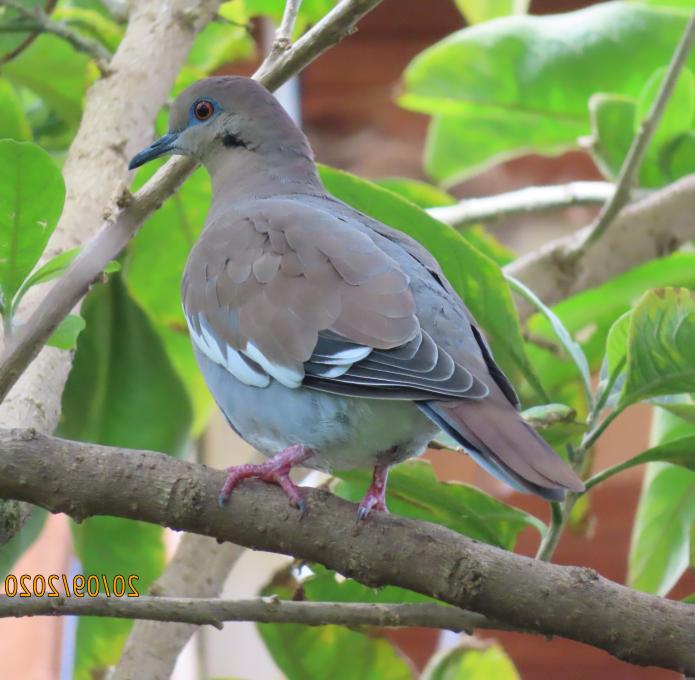
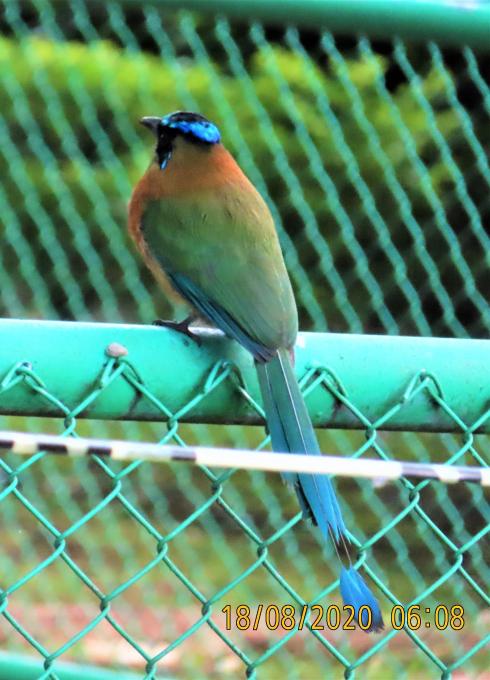
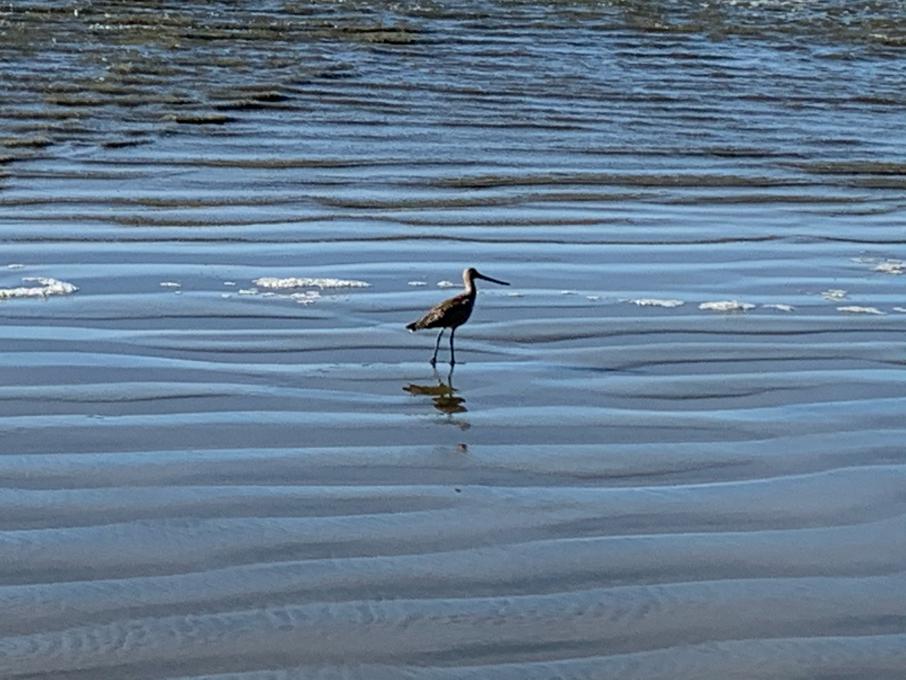 I think it is either a Short-Billed or Long-Billed Dowitcher. These two birds are both shore birds and thus inhabit the same habitat, but they are very different sizes and different shapes, mainly in the bill.
The colour that I chose was rusty red-orange. Three birds that have this are the American Robin, Chestnut-backed chickadee and varied thrush.
Two birds on the search for food are the Belted Kingfisher, which swoops from a height to grab fish, and the Great Blue Heron, which stands still in the shallow water or shore and jabs it's head into the water to grab fish. These are two very different methods of functionally doing the same thing - catching a fish. Another was little shorebirds (I think Killdeer or a similar species), just pecking in the mud, presumably to find small creatures to eat.
While naming a single favorite bird is hard, I would have to say that the Western Tanager. The male's jet-black wing with a clear white wing bar along with the bright red forehead is very distinctive. The female's colouration looks like more drab, greenish-yellow version of the male's. The general size is robin-sized and the shape is close to that of a robin. According to Merlin, it breeds mainly in high elevation coniferous forests, and can often be found high in the tops of trees. Also according to Merlin, it's range stretches mostly from the west coast of North America to roughly near the center. It's breeding range stretches a little bit into Nunavut, and all the way down to around the US - Mexico border, and it's winter range is mainly Central America.
I think it is either a Short-Billed or Long-Billed Dowitcher. These two birds are both shore birds and thus inhabit the same habitat, but they are very different sizes and different shapes, mainly in the bill.
The colour that I chose was rusty red-orange. Three birds that have this are the American Robin, Chestnut-backed chickadee and varied thrush.
Two birds on the search for food are the Belted Kingfisher, which swoops from a height to grab fish, and the Great Blue Heron, which stands still in the shallow water or shore and jabs it's head into the water to grab fish. These are two very different methods of functionally doing the same thing - catching a fish. Another was little shorebirds (I think Killdeer or a similar species), just pecking in the mud, presumably to find small creatures to eat.
While naming a single favorite bird is hard, I would have to say that the Western Tanager. The male's jet-black wing with a clear white wing bar along with the bright red forehead is very distinctive. The female's colouration looks like more drab, greenish-yellow version of the male's. The general size is robin-sized and the shape is close to that of a robin. According to Merlin, it breeds mainly in high elevation coniferous forests, and can often be found high in the tops of trees. Also according to Merlin, it's range stretches mostly from the west coast of North America to roughly near the center. It's breeding range stretches a little bit into Nunavut, and all the way down to around the US - Mexico border, and it's winter range is mainly Central America.